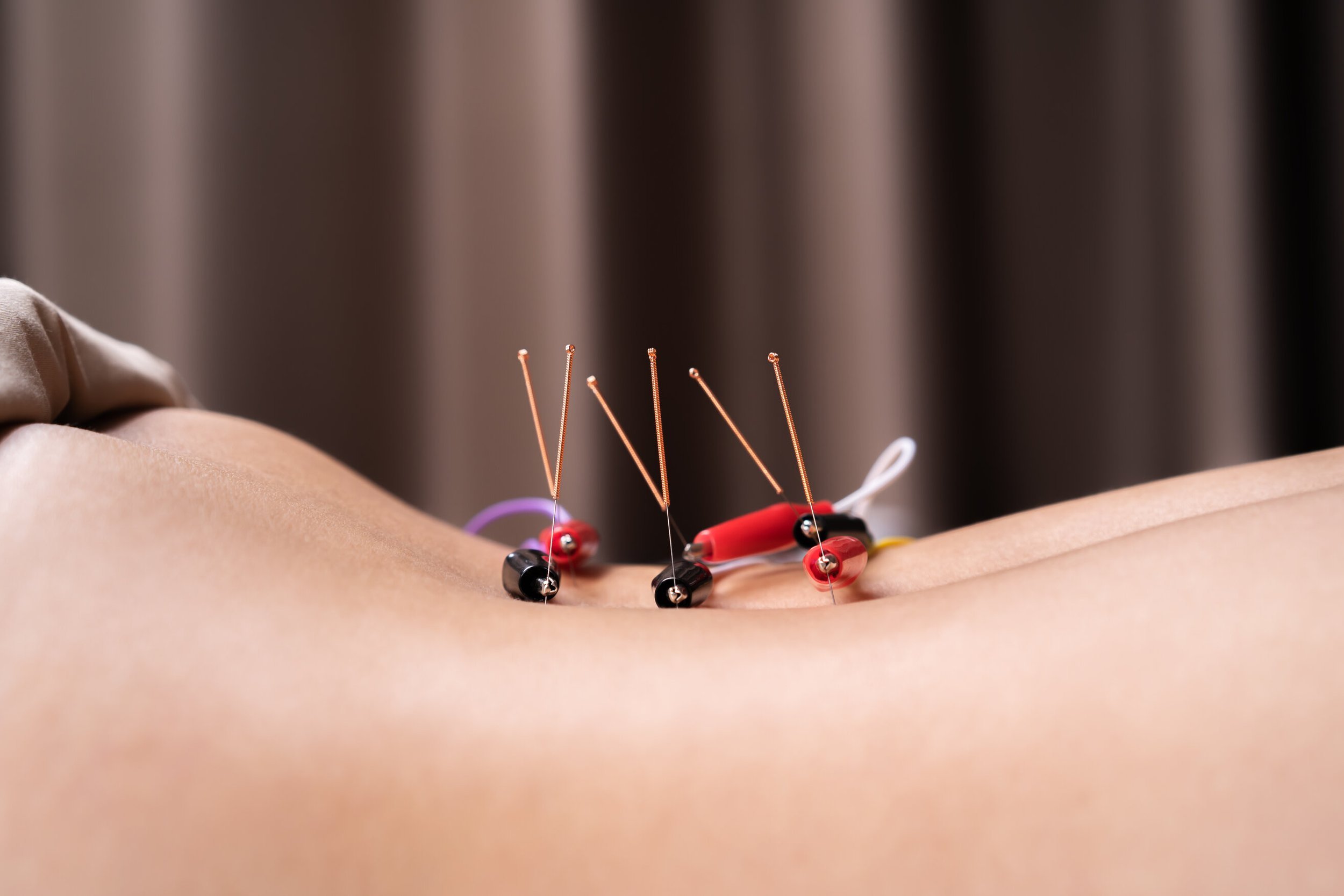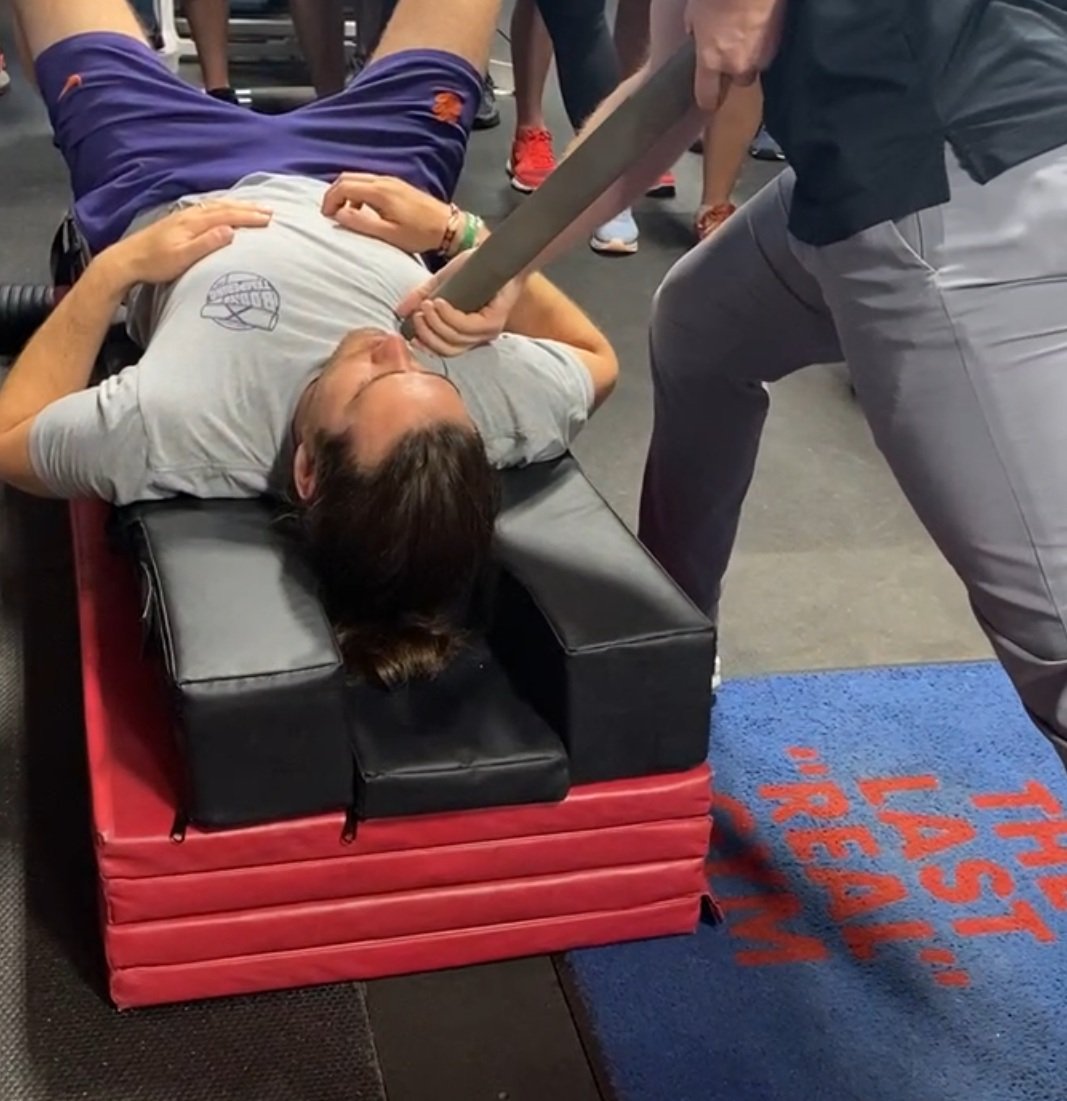
It's important to note that not all dry needling treatments are created equal, and the quality of treatment can vary greatly depending on the provider. When selecting a provider to administer dry needling, it's crucial to do your research and ask questions about their education and experience to ensure they have the necessary skills to provide safe and effective treatment.
Dry needling is a highly effective treatment technique used by physical therapists worldwide to treat acute and chronic orthopedic and neuromusculoskeletal conditions. Dry needling involves the insertion of small filament type needles into myofascial trigger points, tendons, ligaments, or near bones or nerves to stimulate a healing response and permanently reduce pain and dysfunction. Dry needling is highly effective for many conditions including the treatment of arthritis, chronic pain, carpal tunnel syndrome, plantar fasciitis, headaches, golfers elbow and tennis elbow, sciatica, TMJ, Achilles tendonitis, cervical and lumbar radiculopathy, and many more.
While both Dry needling and Acupuncture both use thin filament type needles; the ideology and theoretical backgrounds are very different. Dry Needling is based on Western medical research and principles, whereas acupuncture is based on Traditional Chinese Medicine in which the purpose is to alter the flow of energy ("Qi") along traditional Chinese meridians for the treatment of diseases. In acupuncture, needles are typically placed along meridians whereas in Dry needling needles are placed based on anatomy – targeting muscles, tendons, ligaments, bones or near nerves. Dry needling is a modern intervention technique which is science-based and rooted in anatomy. Dry needling is used for the treatment of pain and dysfunction in neuromusculoskeletal conditions throughout the body.
Each patient describes the processes of being needled differently. Depending on what tissues are being treated; the sensation will feel different. If Dry needling is recommended for you, I will make sure you know what to expect from the exact technique we plan to use to treat your condition. Quite frequently, patients report not feeling the needle being inserted at all; there are sometimes where there is a more sensitive spot and a mild discomfort in noted. The nice thing is, due to the mechanisms of how Dry needling works, any discomfort will typically resolve within a few seconds. To get the best benefits of Dry needling, you actually want to feel a mild discomfort when we stimulate the needles – most patients describe this as a mild warmth, tightness, ache. This only needs to be mild and will resolve within a few seconds sue to the biochemical and neurophysiological responses to the needling technique. Feeling that mild discomfort is what stimulates your body to respond with all of the incredible pain-relieving and healing responses (see below for more information). You may also experience what is called the local twitch response (LTR), this is a small (local) involuntary muscle contraction and means that we are positively affecting the desired tissue.
Dry needling has been shown to have many physiological mechanisms to reduce pain and disability, including local mechanical, electrophysiological, neurophysiological, and chemical/cellular effects. These effects include decreased pain, improved blood flow, decreased muscle contraction (relief of knots), improved neuromuscular activation and timing, and decreased inhibition of the descending sensory pain pathways.
In research, dry needling has been shown to work by activating various biochemical, biomechanical, endocrinological, and neurovascular mechanisms in the body. Dry needling stimulates your body to release your own natural painkillers such as opioids, cannabinoids, and serotonin, which help reduce pain. It also stimulates your body to bathe the local area in helpful biochemicals which reduce inflammation. Dry needling has also been shown to improve local and micro-circulation which helps with symptoms and healing. Dry needling is a powerful tool in reducing pain and dysfunction and improving range of motion and function in the treatment for acute and chronic orthopedic and neuromusculoskeletal conditions.
If you're suffering from neuromusculoskeletal conditions such as back pain, joint pain, or limited range of motion, spinal and extremity manipulation may be a viable treatment option for you. These manual therapy techniques are performed by advanced clinicians, such as Doctors of Physical Therapy and Osteopractors, to help reduce pain, improve motion, and increase muscle strength, allowing you to return to your normal activities. These adjustments are safe, comfortable, and highly effective when administered by experienced clinicians.
Joint manipulation, whether of the spine or other joints in the body, is another manual therapy technique that has been shown to improve overall function and reduce pain in neuromusculoskeletal conditions. This technique utilizes high-velocity, low-amplitude thrusts to create a quick stretch on the joint, resulting in a "pop" medically referred to as a cavitation. While the cause of this cavitation is up for debate, research shows that there is a release of your body’s own natural pain-killers (decreased pain), improved joint mobility, increased circulation, and reduced sensitivity in both the spine and corresponding areas into the arms and legs following proper manipulation of the joints.
Alpha Osteopractic employs a variety of highly-skilled mid-range techniques which are safe and effective. Depending on your specific needs, various techniques can be used in any position to ensure your comfort and optimal effectiveness.
.jpg)

Instrument-Assisted Soft Tissue Mobilization (IASTM) is a soft-tissue treatment technique that uses tools made of metal or plastic to perform targeted massage and manipulation of soft tissue. There are multiple techniques within IASTM that can help to break down scar tissue and adhesions, reduce inflammation, and improve range of motion. This technique is often used to treat conditions like muscle strains, tendinitis, and chronic pain. Practitioners can perform skin, fascial, nerve gliding, and neuro-sensory pain modulation through tissue mobilization with specific mechanoreception stimulation. Despite the hard-edged nature of the tools, IASTM techniques do not need to be aggressive to deliver effective outcomes. Light stroking techniques can be just as effective, and more pressure can be utilized as desired, making IASTM a versatile and effective addition to your comprehensive physical therapy treatment plan.
Looking for a unique approach to soft tissue mobilization? Cupping therapy may be just what you need. Unlike traditional massage, which applies compressive or translatory forces to the tissues, cupping creates a decompressive force by lifting the skin, tissue, and muscle upwards. This unique force can offer relief from the constant pushing, pulling, and compressing your tissues experience every day. Cupping can be done in two ways: static cupping, where cups are left in place for a specified time, or dynamic cupping, where the cups are moved around on the skin or paired with specific movements. By increasing blood flow and circulation, relieving muscle tension, and promoting cellular repair, cupping can help manage pain, form new connective tissue, and create new blood vessels. And as a complementary treatment, cupping can be a wonderful addition to your rehabilitation and wellness routine.


Body Tempering is a soft tissue treatment method that was developed by Donnie Thompson in 2014. The technique entails using weighted steel cylinders to apply deep and heavy pressure to muscles. It has been clinically proven to be beneficial for athletes as an alternative to traditional stretching, foam rolling, and deep tissue mobilization. Body tempering can help repair muscle strains, increase soft tissue extensibility, reduce pain, and improve soft tissue elasticity for load absorption, ultimately reducing the risk of soft tissue injury. Additionally, it can help reduce the overloading of “Cinderella fibers” by improving the load tolerance of neighboring fibers, thereby reducing muscle fatigue and spasm. Body tempering, in comparison to foam rolling, and TheraGun for muscle recovery, produced improved vertical jump performance post-treatment. Athletes who received body tempering also reported feeling more relaxed and experiencing less soreness than the other two comparison groups. Body tempering can help prepare soft tissue for activity and improve muscle recovery with longer-lasting results than static stretching, massage, or other soft tissue interventions. Body tempering can stimulate improved strength and flexibility.
Blood flow restriction therapy (BFR), also known as occlusion training, is a rehabilitation technique that involves using a specialized cuff to partially restrict blood flow. The goal is to allow blood flow into the muscle and restrict blood flow out of the muscle. This technique has been shown to increase muscle strength and size, improve endurance, improve bone health and accelerate recovery. By restricting blood flow, BFR triggers a series of physiological responses, including the release of growth factors and an increase in muscle protein synthesis, that promote muscle growth and repair. BFR is commonly used in physical therapy to help patients recover from injuries, surgery, or other conditions that limit their ability to exercise at high intensity. It is also used by athletes and fitness enthusiasts to enhance their performance and improve their overall fitness level.
.jpg?height=2000&name=BFR%2BBicep%2Bcurl%2B1-2%2B(1).jpg)
14669-B US 17 N
Hampstead, NC 28443
Located behind Crossfit Reignited and Taste Of Sunrise Coffee
Monday-Friday: 8:00 - 5:00
Saturday: Closed
Sunday: Closed
*Additional appointments may be available by request
Phone & Text: 910-216-0726
© ALPHA OSTEOPRACTIC 2023 ALL RIGHTS RESERVED